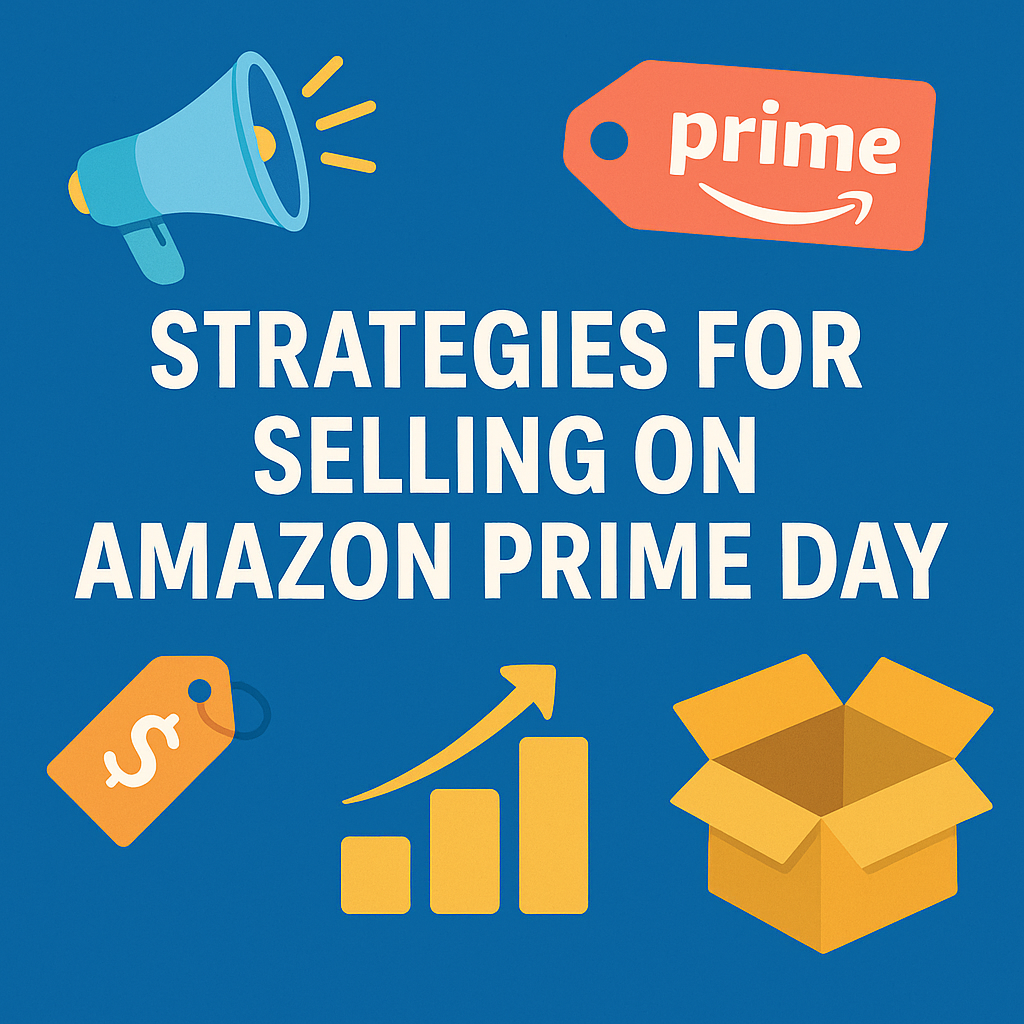Pre-Prime Day Prep: Setting the Stage for Success
Inventory Forecasting and Fulfillment
- Forecast Aggressively: Look at year-over-year sales data and plan for a 2x–4x increase.
- Ship Early: Amazon recommends FBA inventory be received at least 3–4 weeks before Prime Day.
- Backup with FBM: Prepare Fulfilled By Merchant (FBM) stock in case of FBA delays or stockouts.
Optimize Listings
- Refresh Images: Use high-resolution lifestyle images, infographics, and A+ Content.
- SEO Polish: Re-evaluate backend keywords, bullet points, and title to align with trending search terms.
- Social Proof: Encourage reviews pre-Prime Day to increase conversion rates.
Build Your Audience
- Email Campaigns: Warm up your customer base with sneak peeks or early access.
- External Traffic: Use Instagram, TikTok, and influencer marketing to drive external momentum.
Prime Day Advertising & Deal Strategy
Let’s break down the key deal types and ad tactics, including pros and cons for each:
Lightning Deals
- Pros:
- Featured on Prime Day Deals Page
- Huge traffic surge and urgency (timer)
- Cons:
- Expensive fees ($150+)
- Requires deep discounts (20%+)
- Limited time window
Coupons
- Pros:
- Bright green badge grabs attention
- Easy to stack on top of other deals
- Budget-friendly and flexible
- Cons:
- Doesn't guarantee placement
- Clipping is required by customers
Best Deals
- Pros:
- Featured for up to 2 weeks (including Prime Day)
- More affordable than Lightning Deals
- Cons:
- Not as urgent as lightning deals
- Still requires discount and approval
Sale Price (Strikethrough Pricing)
- Pros:
- Visible price slash increases conversions
- No deal fee required
- Stays active as long as you set
- Cons:
- Doesn't get featured in Prime Day deal sections
- Must have historical pricing to justify the strike-through
💥 Ad Strategy for Prime Day
Sponsored Products (SP)
- Use for: High-converting ASINs and top-selling keywords.
- Strategy:
- Start campaigns 2 weeks before to ramp up relevance
- Increase bids 50–100% on Prime Day
- Protect branded keywords
Sponsored Brands (SB)
- Use for: Brand awareness and cross-selling
- Strategy:
- Feature multiple Prime Day deals in the same ad
- Use custom headlines like “Prime Day Exclusive!”
Sponsored Display (SD)
- Use for: Retargeting browsers and reaching competitor pages
- Strategy:
- Run views remarketing starting 2–3 weeks pre-Prime Day
- Boost budgets for in-market audiences
Amazon DSP (Demand Side Platform)
- Use for: Advanced retargeting and off-Amazon reach
- Strategy:
- Run awareness campaigns pre-event
- Segment lookalike audiences of previous buyers
Common Mistakes to Avoid
Not Having Enough Inventory
Stockouts not only lose sales, they kill your BSR and long-term ranking.
Turning on Ads Too Late
Ads need ramp time. Launch 1-2 weekds in advance to gain relevance.
Over-Discounting Low-Margin Items
Be strategic—prioritize hero products and bundles with strong ROI.
Relying Solely on Amazon Traffic
Leverage your email list, influencer network, and social platforms to boost visibility.
Not Using Campaign Budgets Wisely
Use dayparting or budget rules to prevent mid-day campaign exhaustion.
Post-Prime Day: What to Do Next
- Retargeting: Use Sponsored Display and DSP to recapture non-converting traffic.
- Review Requests: Use Amazon's “Request a Review” automation or tools like FeedbackWhiz.
- Analyze & Adjust: Deep dive into ad performance, conversion rates, and session data.
- Leverage Momentum: Capitalize on new reviews, ranking boosts, and repeat customers.
Prime Day can be a rocket booster for your brand—if you come prepared. Focus on inventory readiness, strategic promotions, and aggressive advertising. Avoid the common mistakes, think long-term beyond the event, and you’ll turn Prime Day into a launchpad for Q4 dominance.
